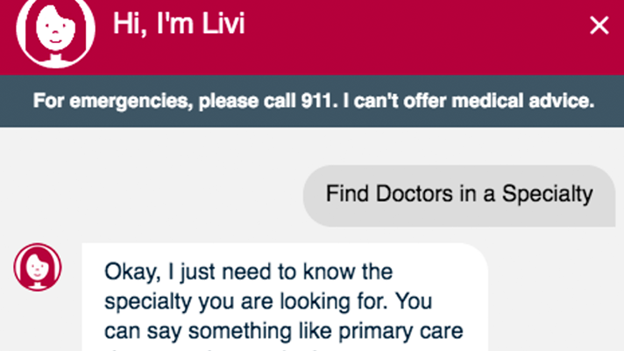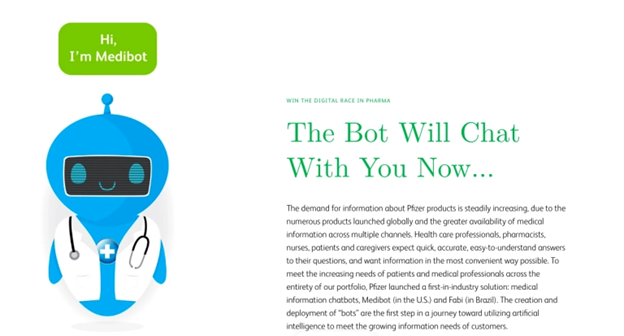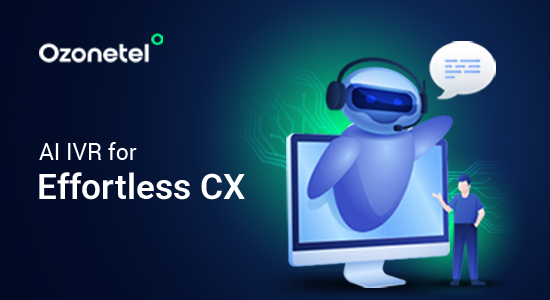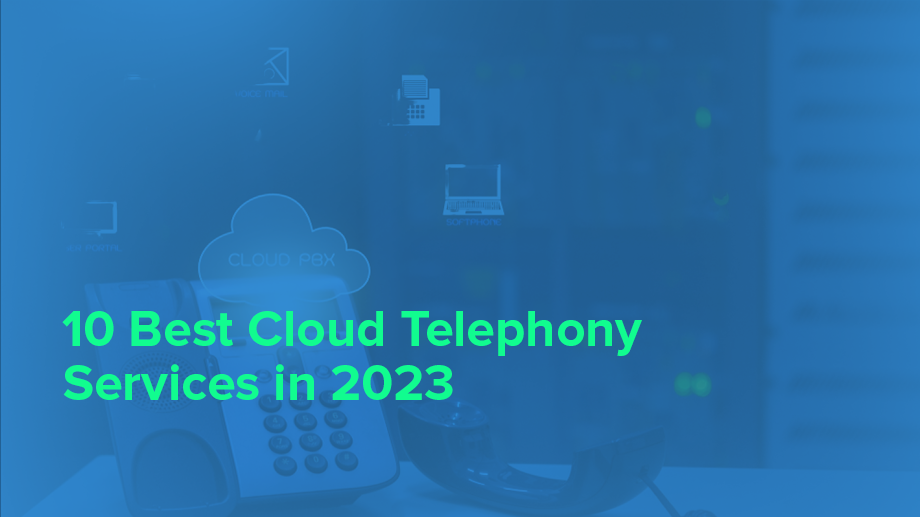- Resources
- Conversational AI in Healthcare: Applications, Benefits & Real-World Examples
Conversational AI in Healthcare: Applications, Benefits & Real-World Examples

The healthcare sector faces many problems – rising costs, staff shortages, and growing patient demands- making it hard for organizations to keep up. Addressing these challenges requires a solution that balances operational efficiency with patient-centric care.
Conversational AI offers a way to handle these challenges, making healthcare more efficient and accessible. Unlike regular chatbots, conversational AI uses advanced technologies like natural language processing and machine learning to provide human-like interactions.
The result? Patients get quick answers to their questions, schedule appointments instantly, or receive medication reminders—all without long wait times or extra strain on staff. In fact, according to Accenture, AI in healthcare could save the U.S. economy $150 billion annually by 2026.
Keep reading to learn more about how conversational AI is a part of this growth.
In this article, we will explore:
- 1.What is Conversational AI in Healthcare?
- 2. Applications of Conversational AI in Healthcare
- 3.How Conversational AI Has Evolved in Healthcare
- 4. The Benefits of Conversational AI in Healthcare
- 5.Challenges in Implementing Conversational AI
- 6.Real-Life Examples of AI Transforming Healthcare
- 7.The Future of AI in Healthcare
- 8.How to Get Started with Conversational AI in Your Practice
What Is Customer Obsession?
Customer obsession is about placing your customers at the core of every decision you make. It goes beyond simply satisfying their needs—it’s about actively working to improve their experience at every touchpoint, anticipating what they want, and addressing their concerns before they even raise them.
What is Conversational AI in Healthcare?
Conversational AI in healthcare refers to technology that lets you interact with machines using natural language, like chatting with a virtual assistant. It helps answer medical questions, schedule appointments, remind you to take medications, or even guide you through symptoms to suggest if you need to see a doctor.
These systems use AI (Artificial Intelligence) to understand and respond to your queries in a human-like way. As a result, they save time, reduce the burden on healthcare staff, and provide quick access to information, making healthcare more accessible and efficient for you.
Applications of Conversational AI in Healthcare
Now that you understand conversational AI, let’s explore how it’s being applied in healthcare. It helps patients, doctors, and healthcare providers communicate better, manage tasks, and access information quickly. Here are some key applications:
Symptom Checking and Triage
Conversational AI tools act as a first step in diagnosing health concerns. You describe your symptoms, and the AI asks follow-up questions to narrow down possible causes. For instance, if you mention a fever and cough, it might ask about the duration, severity, or additional symptoms like shortness of breath.
Your answers suggest whether you should see a doctor immediately, visit an urgent care center, or manage the issue at home. These tools use large medical databases to provide accurate recommendations, helping you avoid unnecessary visits while ensuring serious conditions are flagged.
Mental Health Support
AI-powered mental health chatbots offer immediate emotional support. If you’re anxious, the chatbot might guide you through breathing exercises or ask reflective questions to help you process your feelings.
For more serious concerns, like suicidal thoughts, it can escalate the conversation to a human counsellor or provide emergency contact information. These tools are available 24/7, making mental health support more accessible, especially when human therapists are unavailable.
Appointment Scheduling
Conversational AI simplifies booking medical appointments. Instead of calling a clinic and waiting on hold, you can interact with a chatbot or voice assistant. For example, you might say, “I need to see a dermatologist next week,” the AI will show available slots, confirm your choice, and send reminders.
It can also handle rescheduling or cancellations, updating the clinic’s system in real-time. This reduces administrative workload for staff and makes the process faster and more convenient for you.
Medication Reminders and Adherence Support
Missing medications can worsen health conditions, especially for chronic illnesses. Conversational AI sends you timely reminders like, “It’s time to take your blood pressure medication.” It can also provide additional context, like, “Take this with food to avoid stomach upset.”
If you miss a dose, it might suggest what to do next—for example, “Take it now if it’s within two hours of the scheduled time.” Some systems even track your adherence and share reports with your doctor, helping them adjust your treatment plan.
Chronic Disease Management
For conditions like diabetes, hypertension, or asthma, conversational AI helps you monitor your health daily. For example, it might ask, “What was your fasting blood sugar level this morning?” or “Did you experience any chest pain today?”
Based on your responses, it provides feedback, such as, “Your blood sugar is higher than usual. Drink water and avoid sugary foods today.” If readings are consistently abnormal, it can alert your doctor. This continuous monitoring helps prevent complications and keeps you engaged in managing your health.
Healthcare Staff Support
Conversational AI assists healthcare professionals by automating repetitive tasks. For example, it can transcribe doctor-patient conversations during consultations, generate summaries, and update electronic health records (EHRs) automatically. It can also help nurses prioritize tasks by sending alerts about critical patient updates, like abnormal test results. This reduces administrative burden, allowing staff to focus more on patient care.
Streamlining Insurance Processes
Dealing with insurance can be complicated, but conversational AI simplifies it. It can help you verify coverage, check claim statuses, or explain what specific terms in your policy mean.
For healthcare providers, it can automate claims submissions by extracting relevant information from patient records and filling out forms accurately. If a claim is denied, the AI can identify the reason and suggest corrective actions, speeding up the reimbursement process.
How Conversational AI Has Evolved in Healthcare
In the early stages, healthcare chatbots were rule-based systems that followed simple scripts. For example, they could answer basic queries like clinic hours or provide limited symptom-checking support based on predefined inputs. These systems relied heavily on manual programming and could not adapt or understand context.
However, conversational AI has significantly improved with advancements in natural language processing (NLP), machine learning (ML), and deep learning. Modern systems, like AI-powered healthcare assistants, can analyze large datasets, understand medical terminology, and provide personalized guidance. These tools are now capable of:
- Offering symptom self-assessments.
- Managing medications with reminders and alerts.
- Facilitating mental health support through interactive dialogues.
The Benefits of Conversational AI in Healthcare
Conversational AI is not replacing doctors but becoming a valuable tool supporting patients and healthcare professionals. How? Here are some major benefits that these tools provide:
| Benefits to Patients | Benefits to Healthcare Providers |
|---|---|
| 24/7 access to healthcare support | Reduced administrative workload |
| Faster symptom checking and triage | Improved efficiency in patient management |
| Personalized medication reminders | Enhanced accuracy in documentation |
| Mental health support at any time | Streamlined appointment scheduling |
| Better understanding of medical information | Faster claims processing and billing |
| Convenient post-discharge follow-ups | Real-time alerts for critical patient data |
Benefits to Patients
Some benefits of conversational AI for patients are:
- 24/7 access to healthcare support: You can get answers to health-related questions anytime, without waiting for clinic hours. For example, a chatbot can provide immediate guidance if you have a concern at midnight.
- Faster symptom checking and triage: Instead of waiting for a doctor’s appointment, you can describe your symptoms to an AI tool. It asks relevant questions and suggests whether you need urgent care, saving time and reducing anxiety.
- Personalized medication reminders: Conversational AI sends you reminders tailored to your prescription schedule. It can also explain why medication is important and what to do if you miss a dose, helping you stay on track with your treatment.
- Mental health support at any time: AI chatbots offer immediate emotional support, guiding you through exercises like deep breathing or mindfulness. They can also escalate serious concerns to a human therapist, ensuring you get help when needed.
- Better understanding of medical information: Conversational AI explains complex medical terms or procedures in simple language. For example, it can break down what a diagnosis means or how a treatment works, empowering you to make informed decisions.
- Convenient post-discharge follow-ups: An AI assistant can check your recovery progress after leaving the hospital. It asks about symptoms, reminds you to take medications, and alerts your doctor if something seems wrong, reducing the risk of complications.
Benefits to Healthcare Providers
Similarly, some benefits of conversational AI are:
- Reduced administrative workload: Conversational AI handles repetitive tasks like answering common patient queries or updating records. This frees up time for doctors and nurses to focus on patient care.
- Improved efficiency in patient management: AI tools help prioritize tasks by flagging urgent cases or highlighting abnormal test results. This ensures critical issues are addressed promptly, improving overall care quality.
- Enhanced accuracy in documentation: AI can transcribe doctor-patient conversations and automatically update electronic health records (EHRs). This reduces errors caused by manual data entry and ensures records are up-to-date.
- Streamlined appointment scheduling: Conversational AI manages bookings, rescheduling, and cancellations without human intervention. It optimizes clinic schedules, reducing no-shows and improving resource utilization.
- Faster claims processing and billing: AI automates insurance-related tasks, such as verifying coverage or submitting claims. It can also identify and correct errors in claims, speeding up reimbursements and reducing delays.
- Real-time alerts for critical patient data: AI systems monitor patient data continuously and notify providers of any concerning changes. For example, if a patient’s blood pressure spikes, the system alerts the care team immediately, enabling quick intervention.
Challenges in Implementing Conversational AI
While conversational AI offers significant benefits, its implementation in healthcare has several challenges. These hurdles must be addressed to ensure the technology is effective, safe, and equitable. Here are the key challenges:
Data Privacy and Security Concerns
Healthcare data is highly sensitive, and conversational AI systems often handle personal information like medical history, symptoms, and treatment plans. Ensuring this data is protected from breaches or misuse is critical. Any lapse in security can lead to a loss of trust and legal consequences.
Accuracy and Reliability
Conversational AI must provide accurate and reliable information, especially in healthcare, where errors can have serious consequences. For example, if a chatbot misinterprets symptoms or gives incorrect advice, it could delay proper treatment or worsen a condition.
Bias and Fairness
AI systems can unintentionally reflect biases in the data they are trained on. For instance, a chatbot might struggle to understand accents, dialects, or non-standard language, leading to unequal access for certain groups. This can exacerbate health disparities rather than reduce them.
Integration with Existing Systems
Many healthcare providers use legacy systems (older, outdated technology) that may not easily integrate with modern conversational AI tools. Ensuring seamless compatibility with electronic health records (EHRs) and other platforms can be technically challenging and costly.
User Trust and Adoption
Patients and healthcare providers may hesitate to trust AI systems, especially for critical tasks like diagnosis or treatment recommendations. Building confidence in the technology requires demonstrating its reliability and effectiveness over time.
Regulatory and Ethical Issues
Healthcare is a heavily regulated industry, and conversational AI must comply with laws like HIPAA (Health Insurance Portability and Accountability Act) in the U.S. or GDPR (General Data Protection Regulation) in Europe. Ensuring compliance while innovating can be complex. Additionally, ethical concerns, such as the potential for AI to replace human interaction, need careful consideration.
Real-Life Examples of AI Transforming Healthcare
Conversational AI is already making a tangible impact in healthcare, improving patient experiences and streamlining processes for providers. Here are some real-life examples of how this technology is being used effectively:
UCHealth’s Livi

UCHealth implemented Livi, a conversational AI-powered chatbot, to help patients stay more connected to their health. Initially, Livi started by answering simple patient questions, but it has since evolved into a key tool for patient engagement.
- Personalized Information: Livi provides patients with tailored information, such as test results or specific health advice, making it easier for them to understand their condition.
- Seamless Communication: Patients can message their doctors directly through Livi, ensuring quick and efficient communication.
- Timely Interventions: By keeping patients informed and engaged, Livi helps healthcare providers intervene at the right time, improving outcomes.
Pfizer’s Medibot

Pfizer introduced Medibot, an AI chatbot designed to assist patients in finding information about medications and treatment options.
- Instant Responses: Medibot provides detailed, accurate answers to patient queries, such as side effects, dosage instructions, or drug interactions.
- Data Collection: While helping patients, Medibot also gathers valuable data for healthcare professionals, enabling them to identify common concerns or trends.
- Improved Efficiency: By handling routine inquiries, Medibot frees up time for healthcare staff to focus on more critical tasks, improving workflow efficiency.
The Future of AI in Healthcare
Conversational AI is poised to play an even bigger role in healthcare, driven by technological advancements and a growing demand for efficient, patient-centered care. Here’s what the future holds:
More Personalized Care
Future conversational AI systems will leverage deeper insights from patient data to offer highly personalized care. For example, they could analyze your medical history, lifestyle, and genetic information to provide tailored diet, exercise, or medication advice. This level of personalization will help you manage chronic conditions more effectively and make informed decisions about your health.
Predictive Healthcare
Conversational AI will move beyond reactive care to predictive healthcare. By integrating data from wearables, electronic health records (EHRs), and other sources, AI systems could identify potential health risks before symptoms appear. For instance, if your wearable detects irregular heart rhythms, the AI could alert you and suggest preventive measures or a doctor’s visit.
Enhanced Mental Health Support
AI-powered mental health tools will become more sophisticated, offering real-time emotional support and early intervention. Future systems might use voice analysis to detect stress or depression in your tone and provide immediate coping strategies. They could connect you with human therapists, ensuring a seamless transition between AI and human care.
Improved Multilingual and Multicultural Capabilities
As conversational AI evolves, it will better understand and respond to diverse languages, accents, and cultural contexts. This will make healthcare more inclusive, ensuring that people from different backgrounds receive equitable support. For example, an AI system could adapt its communication style to align with cultural norms, making interactions more comfortable and effective.
How to Get Started with Conversational AI in Your Practice
Conversational AI can transform how you engage with patients, streamline workflows, and improve care delivery. Here’s a step-by-step guide to getting started:
1. Identify Your Needs
Start by pinpointing the areas where conversational AI can add the most value. For example:
- Do you want to reduce the administrative burden of scheduling appointments?
- Are you looking to provide 24/7 support for patient queries?
- Do you need a system to send medication reminders or follow-ups?
2. Choose the Right Use Cases
Focus on use cases that align with your practice’s goals. Common healthcare use cases include:
- Appointment Scheduling: Automate booking, rescheduling, and reminders.
- Patient Triage: Use AI to assess symptoms and guide patients to the right care.
- Medication Reminders: Send personalized reminders and dosage instructions.
- Post-Discharge Follow-Ups: Monitor recovery and provide support after hospital visits.
3. Build or Customize Your AI Bot
Creating a conversational AI bot doesn’t require coding expertise. Look for platforms that offer:
- Intuitive Interfaces: Drag-and-drop tools to design bot workflows.
- Pre-Built Templates: Ready-to-use templates for common healthcare tasks like appointment scheduling or FAQs.
- Custom Training: The ability to train the bot on your practice’s specific terminology and workflows.
4. Integrate with Existing Systems
Ensure your AI solution integrates seamlessly with your current healthcare systems, such as:
- Electronic Health Records (EHRs): Pull patient data to provide personalized responses.
- Telemedicine Platforms: Enable bots to schedule virtual consultations or send meeting links.
- CRM Systems: Track patient interactions and follow-ups.
5. Test and Optimize
Before going live, test the AI bot with a small group of patients or staff. Gather feedback on:
- Accuracy: Are the responses correct and relevant?
- User Experience: Is the bot easy to interact with?
- Performance: Does it handle high volumes of queries without delays?
Why Choose Ozonetel for Conversational AI in Healthcare?
Ozonetel’s conversational AI platform is designed to meet the unique needs of healthcare practices. Here’s how it can help:
- Digital Self-Service: Easily create and deploy AI bots for appointment scheduling, symptom checking, and medication reminders.
- Seamless Integration: Integrate with your EHR, telemedicine platforms, and other systems for a unified experience.
- Human-Like Interactions: Ozonetel’s bots use advanced natural language processing (NLP) to understand and respond to patients naturally and empathetically.
- Continuous Learning: The bots learn from every interaction, improving their accuracy and ability to handle complex queries over time.
- 24/7 Support: Provide round-the-clock assistance to patients, reducing wait times and improving satisfaction.
With Ozonetel, you can transform your practice’s patient experience, streamline operations, and focus more on delivering quality care. Schedule a demo now!
Conclusion: How Ozonetel Can Help
Building a customer-first culture requires the right tools to support seamless communication, real-time insights, and personalized interactions. Ozonetel’s cloud communication solutions help businesses streamline customer interactions, improve response times, and enhance overall customer satisfaction.
With features like:
- Omnichannel communication to connect with customers across voice, chat, email, and social platforms.
- AI-driven analytics to track customer sentiment and improve service quality.
- Intelligent call routing to reduce wait times and connect customers with the right agents faster.
- Automated follow-ups and self-service options to ensure customer concerns are addressed promptly.
Unlock the Power of AI in Healthcare – Explore Benefits & Use Cases Today!
Frequently Asked Questions
Adopting a customer-first approach requires structural and cultural shifts within a company. Some common challenges include:
- Siloed Departments: Lack of coordination between sales, support, and product teams can lead to inconsistent customer experiences.
- Slow Response Time: If customer queries are not addressed quickly, satisfaction drops.
- Inflexible Policies: Rigid return, refund, or service policies may frustrate customers.
- Lack of Personalization: Treating all customers the same can reduce engagement.
- Measuring Customer Sentiment: Many businesses don’t track customer satisfaction effectively.
To assess how well your company prioritizes customers, track these key metrics:
- Net Promoter Score (NPS): Measures how likely customers are to recommend your business.
- Customer Satisfaction Score (CSAT): Captures immediate satisfaction levels after interactions.
- Customer Retention Rate: Indicates how well you keep existing customers.
- Customer Churn Rate: Tracks the percentage of customers who stop using your services.
- First Response Time (FRT): Measures how quickly customer queries are addressed.
- Customer Lifetime Value (CLV): Shows the total revenue a business can expect from a single customer over time.
Ozonetel is reshaping customer experience by integrating cloud-based communication solutions that offer features such as:
- Omnichannel Support: Unifying voice, chat, email, and social media interactions for seamless customer service.
- AI-Powered Analytics: Using AI to track customer sentiment and predict behavior for proactive service.
- Automation & IVR (Interactive Voice Response): Reducing wait times and improving first-call resolution with intelligent call routing.
- Remote & Hybrid Support Solutions: Allowing customer service teams to operate efficiently from anywhere.
Related resources
Lorem ipsum dolor sit amet, consectetur adipiscing elit. Ut elit tellus, luctus nec ullamcorper mattis, pulvinar dapibus leo.







